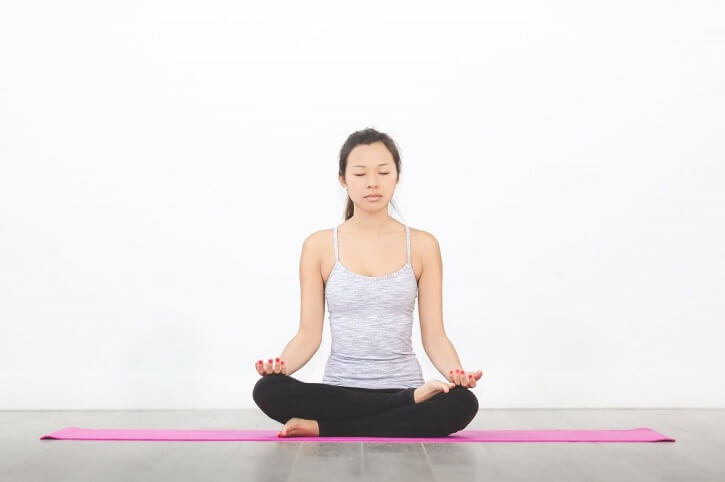After finishing a difficult workout, it may seem impossible to totally relax and meditate. Your heart is pounding and you’re pouring sweat. Is meditation really the natural next step? According to some experts, it should be.
There’s much debate about when the best time to meditate is. Many agree that the morning is optimal because you’re able to prioritize the practice before the distractions of the day arise. Or maybe in the evening, so you can reflect on the past events of the day.
While both of these are true, there is evidence that meditating after a workout has a positive impact on your health. Here are 4 proven benefits of meditation after exercise.

1. Helps with Recovery
One of the many benefits of meditation is its proven effect on lowering cortisol levels in the body, essentially meaning that the practice is scientifically backed as an effective way to reduce stress. But what does this mean for exercise? Well, although it’s a different sort of stress than we traditionally think about, an intense workout puts stress on the body as it works to adapt to the difficult circumstances we’re putting it through.
As a result, meditating after a workout works to reduce the stress that the body went through during the exercise. Similarly to how meditation can help the mind unwind after a stressful day, it can do the same for the body for recovery.
2. Improves Stamina
The emphasis that meditation puts on the breath ensures you have more endurance and stamina for your next workout. If you’re able to fully control your breathing, then you can put off the huffing and puffing for a little longer next time you take on a particularly intense workout. The next time you finish a tough run and find yourself gasping for breath, try to work in a meditation session directly after to bring the breath back to its normal rhythm.
If you have a stressful conversation or hear some concerning news that causes your heart rate to increase and your breath to speed up, then meditating would make sense to reset the nervous system and bring the body back to equilibrium. Well, the same is true after a workout when you’re panting from exhaustion. Implementing a meditation directly afterward can help beef up your stamina if done regularly.
3. Activates the Orbitofrontal Cortex
When we meditate, we focus exclusively on the breath whereas when we do short intense workouts we focus on specific muscles. While our bodies are doing very different activities, our brains are acting the same way. In both exercise and meditation, we activate the orbitofrontal cortex of the brain, which allows us to completely focus on one thing.
By focusing exclusively on one specific activity, the mind becomes refreshed. As a result, when you consider the similar roles of exercise and meditation on the brain, it makes sense that one should follow the next.
4. Reduces Chronic Pain
Since meditation helps with recovery after workouts, it can additionally reduce the chances of chronic pain after exercise. In fact, a 2017 study found that meditation played a role in levying pain intensity for a subject group of people with chronic back pain.
When you meditate after exercise, you focus on your pain and fatigue rather than away from it. By focusing on the pain itself rather than external sensations, pain is reduced faster. If post-workout meditation isn’t for you, don’t rule out meditation completely. The best time to meditate is truly dependent on the individual and when they are most open to mindfulness. To further explore the benefits of meditation at different points of the day, check out this infographic from Ness.






